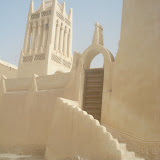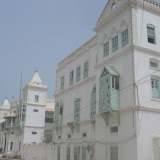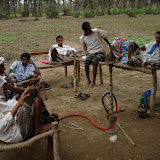 |
| al mahra |
Surprisingly on the border area near the coast between Yemen and Oman a large mountain forest consisting mainly of francinsence trees apeared and convinced me of making a small trekking tour on the yemeni side.
The next day, when I went to the border post nearby, I was surprised again by the silence there, and had to wait 5 hours (!) untill finally a car arrived to take me to the next big town, Salalah.
Salalah is quite a strange city. Most inhabitants have their origin in India and Pakistan, and some of them don't speak arabic at all. The city center consists only of one mainroad and looks very new and modern, neither arabic nor indian. Just behind the main road one can find some old houses in the same style like those in hadramaut, but they are all abandoned and ruinous. The people seem to be very rich, for example public transport is something unknown here, because (almost) everybody has his own car, which makes it quite expensive to move around.
The Dhofar mountains around Salalah are said to become very green during the rainy season, which will start in the next few weeks. Now it's already very foggy up there. In planning my trip, I made the mistake to arrive in every country in the wrong season, when the soil is in it's driest stage.



